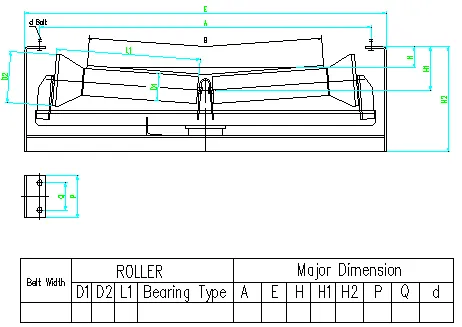 Afrikaans
Afrikaans  Albanian
Albanian  Amharic
Amharic  Arabic
Arabic  Armenian
Armenian  Azerbaijani
Azerbaijani  Basque
Basque  Belarusian
Belarusian  Bengali
Bengali  Bosnian
Bosnian  Bulgarian
Bulgarian  Catalan
Catalan  Cebuano
Cebuano  Corsican
Corsican  Croatian
Croatian  Czech
Czech  Danish
Danish  Dutch
Dutch  English
English  Esperanto
Esperanto  Estonian
Estonian  Finnish
Finnish  French
French  Frisian
Frisian  Galician
Galician  Georgian
Georgian  German
German  Greek
Greek  Gujarati
Gujarati  Haitian Creole
Haitian Creole  hausa
hausa  hawaiian
hawaiian  Hebrew
Hebrew  Hindi
Hindi  Miao
Miao  Hungarian
Hungarian  Icelandic
Icelandic  igbo
igbo  Indonesian
Indonesian  irish
irish  Italian
Italian  Japanese
Japanese  Javanese
Javanese  Kannada
Kannada  kazakh
kazakh  Khmer
Khmer  Rwandese
Rwandese  Korean
Korean  Kurdish
Kurdish  Kyrgyz
Kyrgyz  Lao
Lao  Latin
Latin  Latvian
Latvian  Lithuanian
Lithuanian  Luxembourgish
Luxembourgish  Macedonian
Macedonian  Malgashi
Malgashi  Malay
Malay  Malayalam
Malayalam  Maltese
Maltese  Maori
Maori  Marathi
Marathi  Mongolian
Mongolian  Myanmar
Myanmar  Nepali
Nepali  Norwegian
Norwegian  Norwegian
Norwegian  Occitan
Occitan  Pashto
Pashto  Persian
Persian  Polish
Polish  Portuguese
Portuguese  Punjabi
Punjabi  Romanian
Romanian  Russian
Russian  Samoan
Samoan  Scottish Gaelic
Scottish Gaelic  Serbian
Serbian  Sesotho
Sesotho  Shona
Shona  Sindhi
Sindhi  Sinhala
Sinhala  Slovak
Slovak  Slovenian
Slovenian  Somali
Somali  Spanish
Spanish  Sundanese
Sundanese  Swahili
Swahili  Swedish
Swedish  Tagalog
Tagalog  Tajik
Tajik  Tamil
Tamil  Tatar
Tatar  Telugu
Telugu  Thai
Thai  Turkish
Turkish  Turkmen
Turkmen  Ukrainian
Ukrainian  Urdu
Urdu  Uighur
Uighur  Uzbek
Uzbek  Vietnamese
Vietnamese  Welsh
Welsh  Bantu
Bantu  Yiddish
Yiddish  Yoruba
Yoruba  Zulu
Zulu Accessory Drive Pulley - Understanding Its Importance and Functionality
Understanding Accessory Drive Pulleys Function and Importance
Accessory drive pulleys play a crucial role in the operation of a vehicle's engine. They are an integral part of the accessory drive system, which includes various components such as the alternator, power steering pump, air conditioning compressor, and water pump. Understanding the purpose and function of accessory drive pulleys can help vehicle owners appreciate the complexity of their engine’s operation and the importance of regular maintenance.
At the core of accessory drive pulleys lies a straightforward function to transfer rotational energy from the engine's crankshaft to various accessories. The crankshaft, being the primary component that converts linear energy from the combustion process into rotational energy, spins at high speeds. The accessory drive pulleys are mounted on the front of the engine and are connected to the crankshaft via a serpentine belt or individual belts. As the crankshaft turns, these pulleys rotate, creating the necessary motion to power the accessories.
One of the most notable features of accessory drive pulleys is their construction. Typically made from high-strength materials such as aluminum or reinforced plastic, they are designed to withstand significant stress and wear over time. However, like any mechanical component, they are not immune to failure. Over time, pulleys can become damaged due to frequent use, exposure to harsh environmental conditions, or improper alignment. When a pulley fails, it can lead to a host of problems, including diminished performance of connected accessories or complete system failure.
accessory drive pulley

Regular maintenance is essential for ensuring the longevity and effectiveness of accessory drive pulleys. Vehicle owners should routinely check the condition of the serpentine belt and pulleys. Signs of wear, such as cracks, fraying, or a squealing noise when the engine is running, can indicate issues that need attention. Addressing these signs promptly can prevent more severe damage down the line, which could result in costly repairs or replacement of the entire accessory drive system.
Moreover, proper alignment of the accessory drive pulleys is critical. Misalignment can cause excessive wear on the belts and pulleys, leading to premature failure. Technicians often use alignment tools during routine inspections to ensure that all components are correctly positioned and functioning harmoniously. This kind of preventive maintenance can extend the life of the pulleys and the accessories they operate.
In conclusion, accessory drive pulleys are vital components of a vehicle's engine that contribute significantly to its overall functionality. Their ability to transfer motion from the engine to various accessories ensures that essential systems such as power steering and air conditioning operate efficiently. Understanding their role and importance can empower vehicle owners to take better care of their cars. Regular inspections and maintenance, including checking for wear and ensuring proper alignment, can go a long way in preventing costly repair issues. As with all automotive components, taking proactive steps to care for accessory drive pulleys can enhance vehicle reliability and performance.
-
Revolutionizing Conveyor Reliability with Advanced Rubber Lagging PulleysNewsJul.22,2025
-
Powering Precision and Durability with Expert Manufacturers of Conveyor ComponentsNewsJul.22,2025
-
Optimizing Conveyor Systems with Advanced Conveyor AccessoriesNewsJul.22,2025
-
Maximize Conveyor Efficiency with Quality Conveyor Idler PulleysNewsJul.22,2025
-
Future-Proof Your Conveyor System with High-Performance Polyurethane RollerNewsJul.22,2025
-
Driving Efficiency Forward with Quality Idlers and RollersNewsJul.22,2025





























